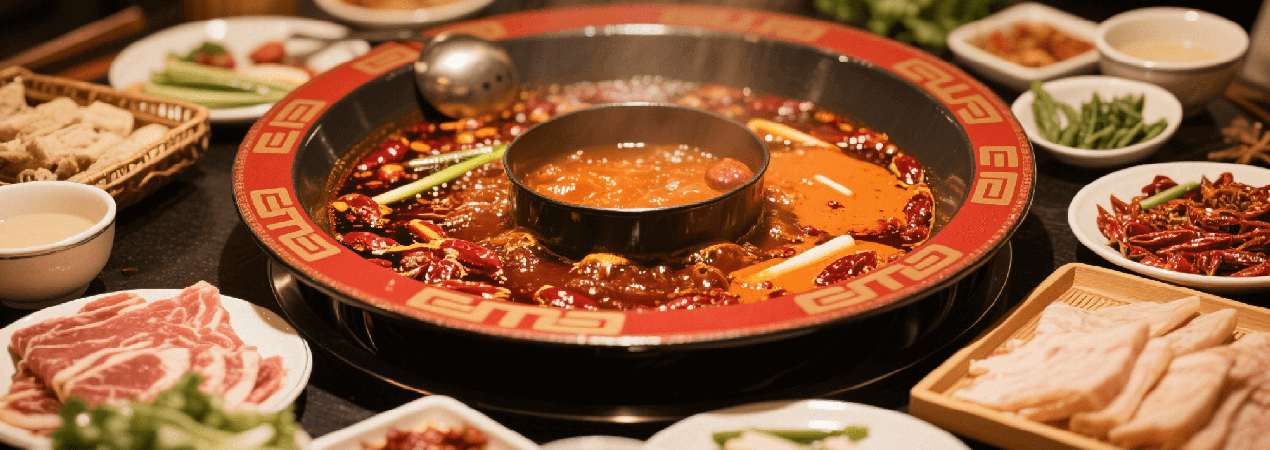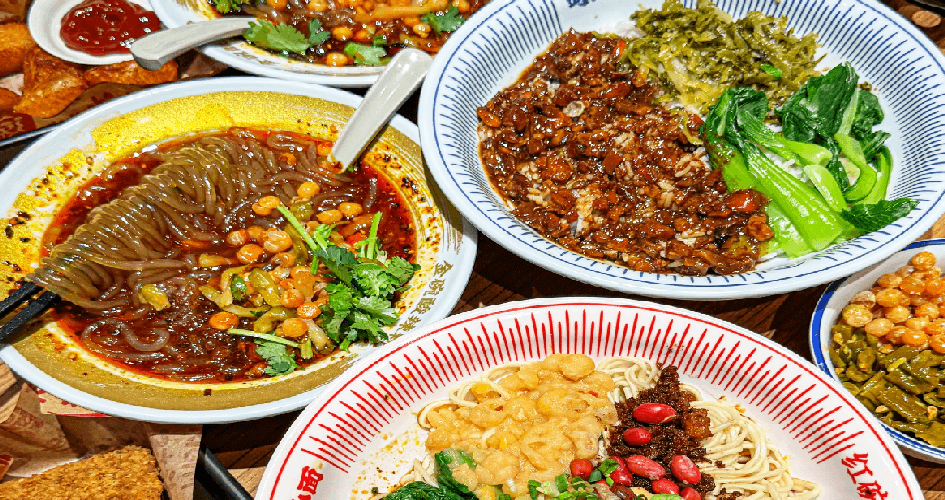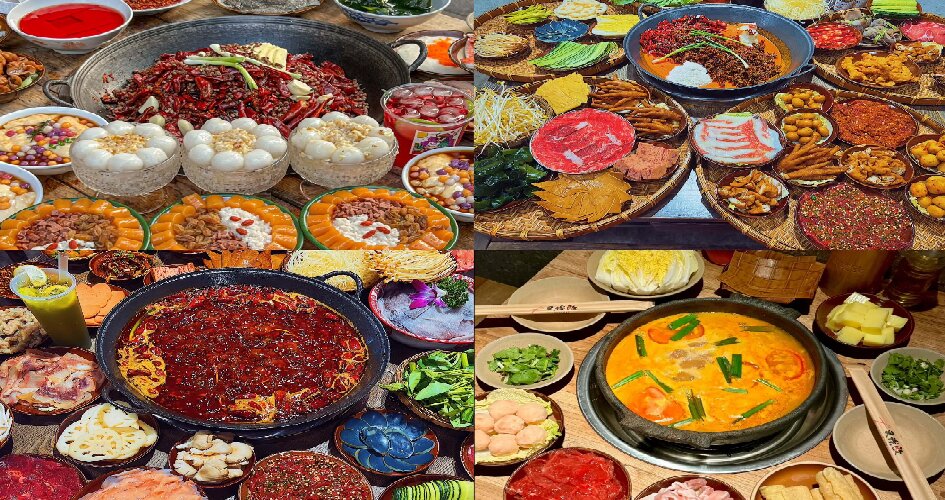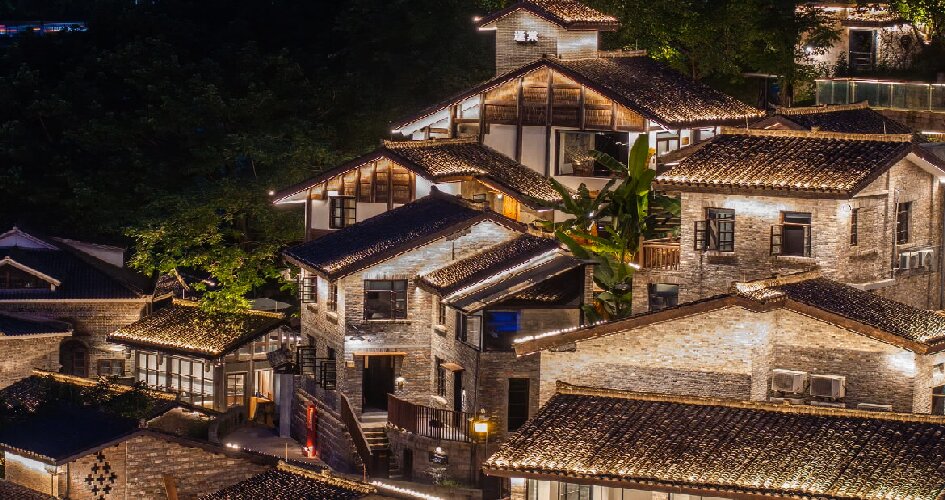
Chongqing Gourmet Food Tour
CQ-01: 3-Day Taste Chongqing’s Best Street Eats & Hot Pot
A three-day in-depth tour of Chongqing, tasting snacks at Jiefangbei, savoring ancient-style delicacies in Ciqikou Ancient Town, exploring the hot pot base, and enjoying delicious food while admiring the river view along Nanbin Road.
Trip Highlights
- Visit the food streets of Jiefangbei and taste authentic snacks hidden in the alleys
- Immerse yourself in Ciqikou Ancient Town and explore the historical inheritance and innovation of Bayu cuisine
- Learn the techniques of stir-frying hot pot seasonings and ingredient matching at Zhoujunji Hot Pot Base, and make your own exclusive hot pot base
- Taste specialty dishes along Nanbin Road and experience the perfect integration of food and urban landscapes

Quality
No Shopping Traps

Group Type
Private

Tour Focus
Local cuisine of Chongqing

Accommodation
Nights:2
Best Season
Spring, Summer, Autumn, Winter
Full itinerary for Chongqing Gourmet Food Tour
After arriving in Chongqing and taking a short rest, go to Jiefangbei. Taste authentic snacks at Bayi Delicious Food Street, which is a food gathering place in the Jiefangbei commercial district. Then go to the main store of Yangjilongfu Restaurant to taste the characteristic Sichuan cuisine.
 Delicacies at Bayi Delicious Food Street
Delicacies at Bayi Delicious Food Street
Your Journey’s Rewards:
Taste authentic characteristic delicacies such as Chongqing noodles and Shancheng small tangyuan (sweet dumplings). In the bustling food streets and alleys, experience the food culture of Chongqing and feel the charm of the food culture of Jiefangbei.
Educational Focus:
Why has Jiefangbei been able to become a landmark gathering numerous characteristic delicacies of Chongqing?
Takeaway:
Because of its historical reasons, Jie Fangbei has become the center of commercial and cultural activities, and the huge flow of people provides the market foundation for the development of gourmet food. Jie Fangbei has an excellent geographical location and convenient transportation, which facilitates the transportation of ingredients. As a result, many food operators have been dealing in food here, and Jie Fangbei has become a gathering place for Chongqing's delicacies.
Thought Challenge:
In the face of the issue that traditional food stores are being replaced by internet-famous stores, how can we balance commercial development with the protection and inheritance of traditional food culture?
Go to Ciqikou Ancient Town and taste the spicy and delicious Mao Xuewang (spicy blood curd) and crispy fried dough twists in the quaint shops. In the afternoon, go to the Zhoujunji Hot Pot Base, learn the skills of stir-frying hot pot bases from professional masters, and make your own hot pot base to feel the unique charm of Chongqing hot pot culture. Then go to Pipa Garden Hot Pot to taste the delicious hot pot.
 Chongqing Hot Pot
Chongqing Hot Pot
Your Journey’s Rewards:
In Ciqikou Ancient Town, savor the traditional cuisine of Chongqing; at Zhoujunji Hot Pot Base, improve your hot pot cooking skills and learn the knowledge behind the hot pot culture.
Educational Focus:
What role does Chongqing hot pot play in human health?
Takeaway:
Chongqing people love to eat hot pot because it has health benefits. Chongqing has a humid climate in summer, and hot pot can make people sweat, which can drive away moisture. It can also cure minor illnesses, such as a slight cold, nasal congestion, headache, etc. A hot pot meal can alleviate symptoms or even cure them. On rainy days, people with rheumatic joint pain and numbness can eat hot pot once, and the pain and numbness can disappear. For those with loss of appetite, eating hot pot can increase their appetite.
Thought Challenge:
In the process of inheriting Chongqing traditional hot pot, how to combine modern taste for innovation?
Head to the Yangtze River Cableway, take the cable car to cross the Yangtze River in the air, and enjoy the beautiful scenery of Chongqing from a unique perspective. After reaching the opposite bank, take a stroll along Nanbin Road, choose a riverside restaurant, and enjoy the fragrant and tender Chongqing grilled fish and the bold and hearty Jianghu cuisine against the backdrop of the brilliant river view, experiencing the ultimate combination of delicious food and beautiful scenery. Then return with wonderful memories.
 Nanbin Road
Nanbin Road
Your Journey’s Rewards:
Experience the transportation wisdom shaped by Chongqing's unique terrain while riding the cable car; appreciate the city's distinctive architecture and historical heritage along Nanbin Road.
Educational Focus:
What historical and cultural characteristics of Chongqing are reflected in the architectural style of Nanbin Road?
Takeaway:
The architectural styles of Nanbin Road reflects Chongqing's abundant historical and cultural characteristics. You can see the diaojiaolou houses which were built in the traditional Bayu style, representing the traditional coastal residential architectural style close to mountains and rivers. You can also see western-style buildings which were built in the opening period of modern times, during which Chongqing experienced port status, as a trading port. Also, there are many modern buildings or high-rise buildings built which represent the modern development of Chongqing. Each of these buildings represents a different architectural style in this area, and their diversity reflecting the history and cultural richness of Chongqing.
Thought Challenge:
The Yangtze River Cableway and Nanbin Road have now become popular tourist attractions for taking photos. The influx of a large number of tourists has had a certain impact on the local ecological environment and the lives of residents. How can we carry out ecological protection and community coordination work well while developing the tourism economy?
What’s Included
- Experienced tour guides
- Entrance fee to all spots listed in the itinerary
- Well selected hotel accommodation
- Meals mentioned in the itinerary
- Expert drivers and comfortable vehicles with air-conditioning
Hotel Options:
- Comfortable Accommodation: Mercure Chongqing Jiefangbei Hongya Cave
- Deluxe Accommodation: Le Meridien Chongqing Nan’an
Wechat & WhatsApp: +86-13471279378

